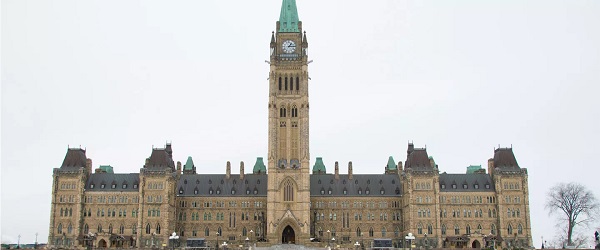Economy
Toronto, Vancouver named “Impossibly Unaffordable”

From the Frontier Centre for Public Policy
Two Canadian cities — Toronto and Vancouver — have earned the title of “impossibly unaffordable” in a new report.
“There has been a considerable loss of housing affordability in Canada since the mid-2000s, especially in the Vancouver and Toronto markets,” according to the Demographia International Housing Affordability report, which is released annually.
“During the pandemic, the increase in remote work (working at home) fuelled a demand increase as many households were induced to move from more central areas to suburban, exurban and even more remote areas. The result was a demand shock that drove house prices up substantially, as households moved to obtain more space, within houses and in yards or gardens.”
Vancouver was the least affordable market in Canada, and the third least affordable out of all of the 94 markets observed in the report. The West Coast city’s affordability issue has “troublingly” spread to smaller areas like Chilliwack, the Fraser Valley, Kelowna, and markets on Vancouver Island, per the report.
Toronto was named as the second least affordable market in Canada. However, it fared slightly better than Vancouver when it came to the other markets, ranking 84 out of 94 in international affordability.
“As in Vancouver, severely unaffordable housing has spread to smaller, less unaffordable markets in Ontario, such as Kitchener-cambridge-waterloo, Brantford, London, and Guelph, as residents of metro Toronto seek lower costs of living outside the Toronto market,” the report says.
The findings of the report have “grave implications on the prospects for upward mobility,” said Joel Kotkin, the director at the Center for Demographics and Policy at Chapman University, a co-publisher of the report along with Canada’s Frontier Centre for Public Policy.
“As with any problem, the first step towards a resolution should be to understand the basic facts,” he said. “This is what the Demographia study offers.”
The report looked at housing affordability in 94 metropolitan areas in Australia, China, Ireland, New Zealand, Singapore, the United Kingdom, the United States and Canada. The data analyzed was taken from September 2023. The ratings are based on five categories (affordable, moderately unaffordable, seriously unaffordable, severely unaffordable, and impossibly unaffordable) with a points system to classify each area.
The report determined affordability by calculating the median price-to-income ratio (“median multiple”) in each market.
“There is a genuine need to substantially restore housing affordability in many markets throughout the covered nations,” said Frontier Centre for Public Policy president Peter Holle, in a statement. “In Canada, policymakers are scrambling to ‘magic wand’ more housing but continue to mostly ignore the main reason for our dysfunctional costly housing markets — suburban land use restrictions.”
Toronto and Vancouver both received the worst possible rating for affordability, making them stand out as the most expensive Canadian cities in which to buy a home. However, other Canadian markets — like Calgary, Montreal and Ottawa-gatineau — stood out as well. They were considered “severely unaffordable.”
“This is a long time coming,” senior economist with the Canadian Centre for Policy Alternatives David Macdonald told CTV News.
“We haven’t been building enough housing, we certainly haven’t had enough government investment in affordable housing for decades, and the chickens are coming home to roost.”
The most affordable Canadian city in the report was Edmonton, which was given a rating of “moderately unaffordable.” The city in Alberta was “at least twothirds more affordable” than Vancouver.
Overall, Canada ranked third in home ownership compared to the other regions observed in the report. The highest home ownership rate was in Singapore, at 89 per cent, followed by Ireland, at 70 per cent. In Canada, the rate was 67 per cent.
First published in the National Post here, June 17, 2024.
Bjorn Lomborg
Net zero’s cost-benefit ratio is crazy high

From the Fraser Institute
The best academic estimates show that over the century, policies to achieve net zero would cost every person on Earth the equivalent of more than CAD $4,000 every year. Of course, most people in poor countries cannot afford anywhere near this. If the cost falls solely on the rich world, the price-tag adds up to almost $30,000 (CAD) per person, per year, over the century.
Canada has made a legal commitment to achieve “net zero” carbon emissions by 2050. Back in 2015, then-Prime Minister Trudeau promised that climate action will “create jobs and economic growth” and the federal government insists it will create a “strong economy.” The truth is that the net zero policy generates vast costs and very little benefit—and Canada would be better off changing direction.
Achieving net zero carbon emissions is far more daunting than politicians have ever admitted. Canada is nowhere near on track. Annual Canadian CO₂ emissions have increased 20 per cent since 1990. In the time that Trudeau was prime minister, fossil fuel energy supply actually increased over 11 per cent. Similarly, the share of fossil fuels in Canada’s total energy supply (not just electricity) increased from 75 per cent in 2015 to 77 per cent in 2023.
Over the same period, the switch from coal to gas, and a tiny 0.4 percentage point increase in the energy from solar and wind, has reduced annual CO₂ emissions by less than three per cent. On that trend, getting to zero won’t take 25 years as the Liberal government promised, but more than 160 years. One study shows that the government’s current plan which won’t even reach net-zero will cost Canada a quarter of a million jobs, seven per cent lower GDP and wages on average $8,000 lower.
Globally, achieving net-zero will be even harder. Remember, Canada makes up about 1.5 per cent of global CO₂ emissions, and while Canada is already rich with plenty of energy, the world’s poor want much more energy.
In order to achieve global net-zero by 2050, by 2030 we would already need to achieve the equivalent of removing the combined emissions of China and the United States — every year. This is in the realm of science fiction.
The painful Covid lockdowns of 2020 only reduced global emissions by about six per cent. To achieve net zero, the UN points out that we would need to have doubled those reductions in 2021, tripled them in 2022, quadrupled them in 2023, and so on. This year they would need to be sextupled, and by 2030 increased 11-fold. So far, the world hasn’t even managed to start reducing global carbon emissions, which last year hit a new record.
Data from both the International Energy Agency and the US Energy Information Administration give added cause for skepticism. Both organizations foresee the world getting more energy from renewables: an increase from today’s 16 per cent to between one-quarter to one-third of all primary energy by 2050. But that is far from a transition. On an optimistically linear trend, this means we’re a century or two away from achieving 100 percent renewables.
Politicians like to blithely suggest the shift away from fossil fuels isn’t unprecedented, because in the past we transitioned from wood to coal, from coal to oil, and from oil to gas. The truth is, humanity hasn’t made a real energy transition even once. Coal didn’t replace wood but mostly added to global energy, just like oil and gas have added further additional energy. As in the past, solar and wind are now mostly adding to our global energy output, rather than replacing fossil fuels.
Indeed, it’s worth remembering that even after two centuries, humanity’s transition away from wood is not over. More than two billion mostly poor people still depend on wood for cooking and heating, and it still provides about 5 per cent of global energy.
Like Canada, the world remains fossil fuel-based, as it delivers more than four-fifths of energy. Over the last half century, our dependence has declined only slightly from 87 per cent to 82 per cent, but in absolute terms we have increased our fossil fuel use by more than 150 per cent. On the trajectory since 1971, we will reach zero fossil fuel use some nine centuries from now, and even the fastest period of recent decline from 2014 would see us taking over three centuries.
Global warming will create more problems than benefits, so achieving net-zero would see real benefits. Over the century, the average person would experience benefits worth $700 (CAD) each year.
But net zero policies will be much more expensive. The best academic estimates show that over the century, policies to achieve net zero would cost every person on Earth the equivalent of more than CAD $4,000 every year. Of course, most people in poor countries cannot afford anywhere near this. If the cost falls solely on the rich world, the price-tag adds up to almost $30,000 (CAD) per person, per year, over the century.
Every year over the 21st century, costs would vastly outweigh benefits, and global costs would exceed benefits by over CAD 32 trillion each year.
We would see much higher transport costs, higher electricity costs, higher heating and cooling costs and — as businesses would also have to pay for all this — drastic increases in the price of food and all other necessities. Just one example: net-zero targets would likely increase gas costs some two-to-four times even by 2030, costing consumers up to $US52.6 trillion. All that makes it a policy that just doesn’t make sense—for Canada and for the world.
2025 Federal Election
POLL: Canadians want spending cuts

 By Gage Haubrich
By Gage Haubrich
The Canadian Taxpayers Federation released Leger polling showing Canadians want the federal government to cut spending and shrink the size and cost of the bureaucracy.
“The poll shows most Canadians want the federal government to cut spending,” said Gage Haubrich, CTF Prairie Director. “Canadians know they pay too much tax because the government wastes too much money.”
Between 2019 and 2024, federal government spending increased 26 per cent even after accounting for inflation. Leger asked Canadians what they think should happen to federal government spending in the next five years. Results of the poll show:
- 43 per cent say reduce spending
- 20 per cent say increase spending
- 16 per cent say maintain spending
- 20 per cent don’t know
The federal government added 108,000 bureaucrats and increased the cost of the bureaucracy 73 per cent since 2016. Leger asked Canadians what they think should happen to the size and cost of the federal bureaucracy. Results of the poll show:
- 53 per cent say reduce
- 24 per cent say maintain
- 4 per cent say increase
- 19 per cent don’t know
Liberal Leader Mark Carney promised to “balance the operating budget in three years.” Leger asked Canadians if they believed Carney’s promise to balance the budget. Results of the poll show:
- 58 per cent are skeptical
- 32 per cent are confident
- 10 per cent don’t know
“Any politician that wants to fix the budget and cut taxes will need to shrink the size and cost of Ottawa’s bloated bureaucracy,” Haubrich said. “The polls show Canadians want to put the federal government on a diet and they won’t trust promises about balancing the budget unless politicians present credible plans.”
-

 2025 Federal Election17 hours ago
2025 Federal Election17 hours agoBREAKING: THE FEDERAL BRIEF THAT SHOULD SINK CARNEY
-

 2025 Federal Election18 hours ago
2025 Federal Election18 hours agoCHINESE ELECTION THREAT WARNING: Conservative Candidate Joe Tay Paused Public Campaign
-

 2025 Federal Election1 day ago
2025 Federal Election1 day agoOttawa Confirms China interfering with 2025 federal election: Beijing Seeks to Block Joe Tay’s Election
-

 2025 Federal Election1 day ago
2025 Federal Election1 day agoReal Homes vs. Modular Shoeboxes: The Housing Battle Between Poilievre and Carney
-

 2025 Federal Election2 days ago
2025 Federal Election2 days agoCarney’s budget means more debt than Trudeau’s
-

 International2 days ago
International2 days agoPope Francis has died aged 88
-

 Business7 hours ago
Business7 hours agoHudson’s Bay Bid Raises Red Flags Over Foreign Influence
-

 Business2 days ago
Business2 days agoCanada Urgently Needs A Watchdog For Government Waste


